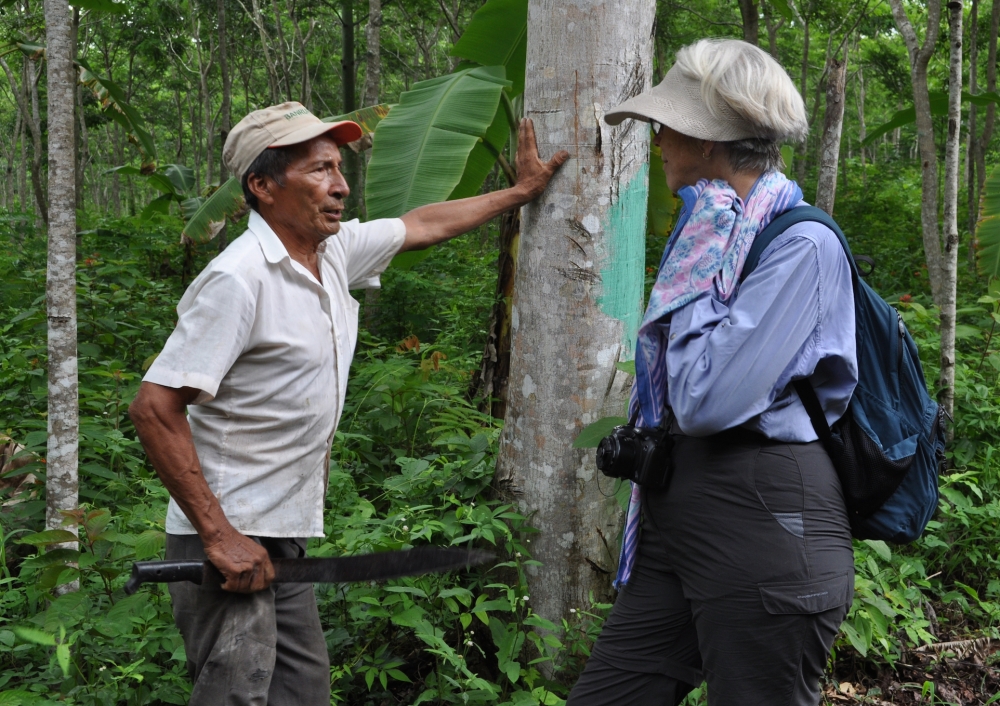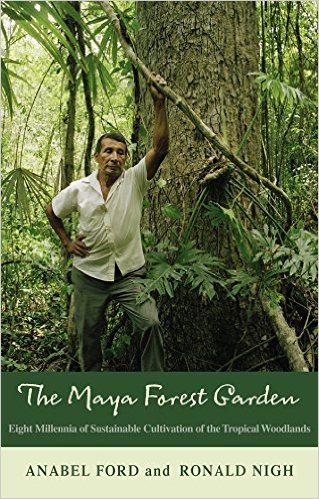
The Cultivated Maya

History has not been kind to the Maya, an indigenous people of Mesoamerica. They’re usually portrayed as the hapless victims of European colonialism who collapsed and disappeared as a result of overpopulation and environmental degradation.
A groundbreaking new book co-authored by a UC Santa Barbara researcher, however, asserts the Maya not only survived their presumed apocalypse, they thrive today using farming techniques that are thousands of years old. “The Maya Forest Garden: Eight Millennia of Sustainable Cultivation of the Tropical Woodlands” (Left Coast Press, 2015) by UCSB’s Anabel Ford and Ronald Nigh demonstrates that the Maya milpa system is sustainable, sophisticated and highly productive. Nigh is a professor of social anthropology at Centro Investigaciones y Estudios Superiores in Chiapas, Mexico.
“This is a new paradigm and alternative to the received wisdom,” said Ford, director of the MesoAmerican Research Center at UCSB. An archaeologist, she has been working in Mesoamerica since 1972 and discovered the ancient Maya city of El Pilar in 1983. “We see it as a wake-up call to be taken seriously for the conservation of the Maya forest.”
In “The Maya Forest Garden,” Ford and Nigh take a multidisciplinary approach to examine how the milpa system — a carefully managed cycle of land clearing and crop rotation that is completed with the land returning to forest — was able to sustain large pre-Columbian populations. And rather than destroying the environment through agriculture, as conventional wisdom holds, the Maya milpa system improved the soil and biodiversity of the forest.
By documenting contemporary milpas and looking deep into the past through archaeology and paleoenvironmental data, Ford and Nigh establish a largely unbroken line of agriculture that has fed the Maya for at least 4,000 years. The Maya farm by hand on small holdings, intensely managing crops and native flora to maximize productivity while protecting the ecosystem. What’s more, they’ve done it through dramatic climatic upheaval, making their sustainable approach to farming an example to the rest of the world in an era of climate change, Ford noted.
“We need to consider the role of the small holder in all areas; they will enhance biodiversity, be more intimate with the landscape and alert to indicators and changes,” she said. “The meta message is to focus on diversity and to manage the water and soil to improve qualities for the future. This can be applied anywhere.”
After more than 40 years in the Maya lowlands, the land and its people still surprise her, Ford said. “I am ever amazed at the subtleties I encounter walking with a master forest gardener,” she said. Maya milpa farmers, she observed, “keep less desirable plants growing in the dry season to maintain moisture, leave water in a tree crotch or a hollow rock for the animals, understand how to find water by the types of insects, know how to see animals by their traces on the ground and orient in the forest by the sun (not easy I assure you), and so much more.”
Not bad for a people who “vanished” from history.
Ford will sign copies of “The Maya Forest Garden” at Chaucer’s Bookstore in Santa Barbara Nov. 23 at 7 p.m. Visit www.marc.ucsb.edu for more information.



